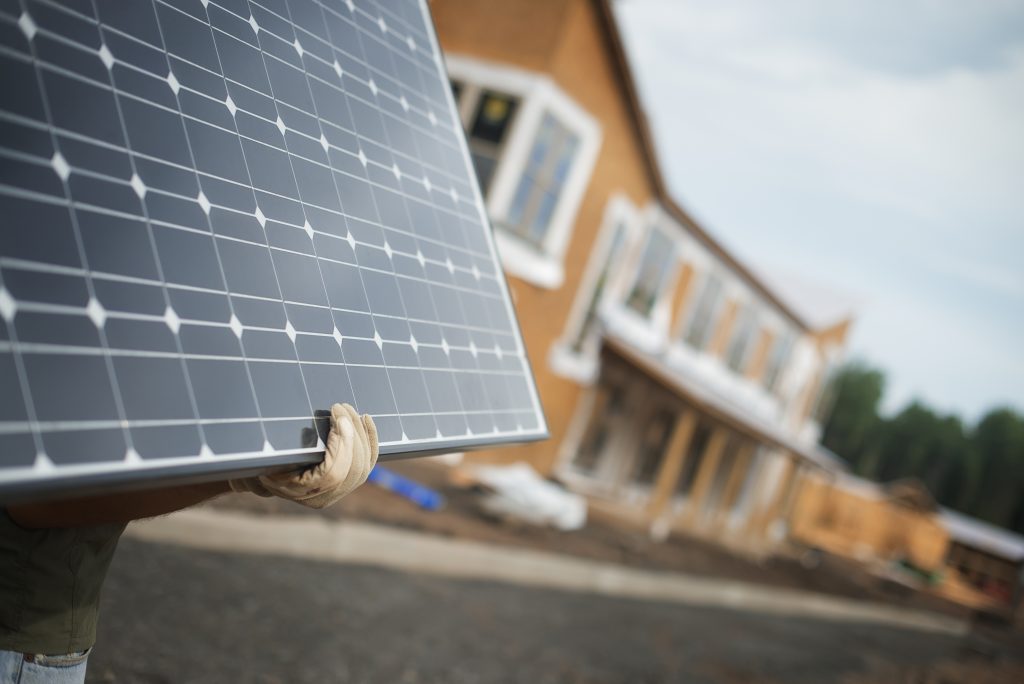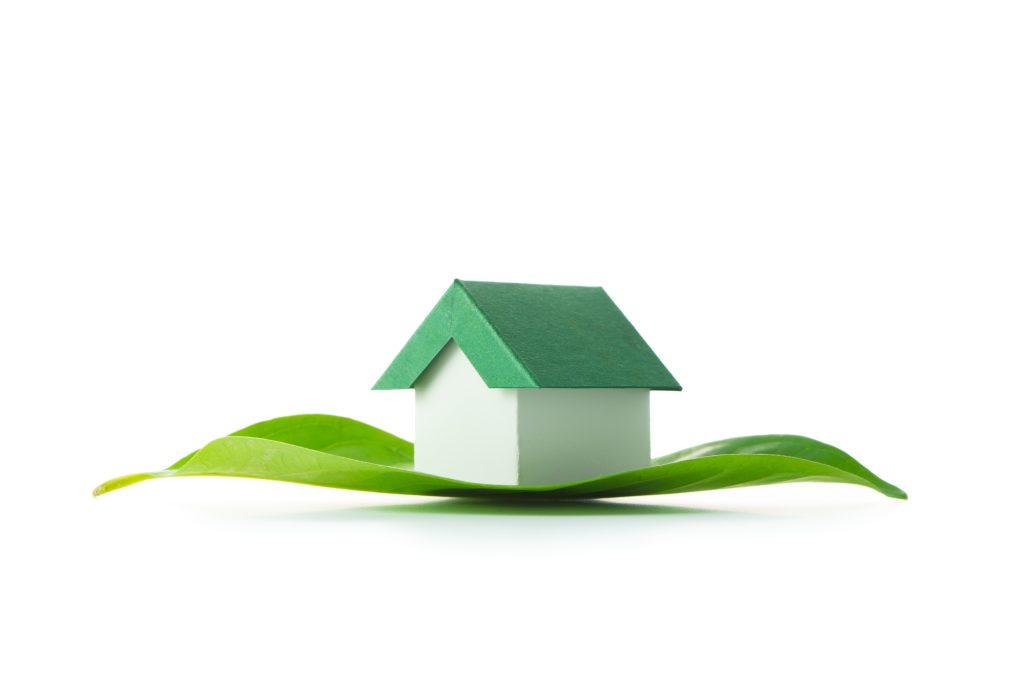In recent years, the demand for sustainable construction practices has grown significantly, especially in urban areas like Staten Island.
One crucial aspect of this trend is the use of sustainable building materials for constructing green houses.
This article explores the 10 most outstanding benefits of using these materials and the positive impact they have on the environment, people’s health, and the economy.
What are Sustainable Building Materials?
Sustainable building materials are construction materials that have a minimal impact on the environment throughout their life cycle, from extraction and production to disposal or recycling.
These materials contribute to energy efficiency, resource conservation, waste reduction, and overall sustainability in the built environment.
They can be natural, recycled, or manufactured from renewable resources.
2.2. Examples
Some examples of sustainable building materials include:
- Reclaimed wood: Wood salvaged from old buildings or other sources, reducing the need for new lumber and preserving forests.
- Recycled metal: Metal materials, such as steel and aluminum, can be melted down and reused, reducing the demand for new raw materials and the energy required for their production.
- Straw bales: Straw bales are a natural, renewable, and biodegradable material that provides excellent insulation and can be used in wall construction.
- Rammed earth: A building technique that involves compacting a mixture of soil, clay, and sometimes cement or lime, creating strong and durable walls with a low environmental impact.
- Bamboo: A rapidly renewable resource that can be used as a structural material or for finishes, such as flooring and cabinetry.
- Recycled plastic: Plastic materials can be recycled and used in various construction applications, such as insulation, decking, and roofing materials.
- Green concrete: A type of concrete that uses waste byproducts, such as fly ash or slag, to reduce the amount of cement required, thereby reducing carbon emissions associated with cement production.
- Cork: A renewable material harvested from the bark of cork oak trees, which can be used for insulation and flooring.
- Cellulose insulation: Made from recycled paper products, cellulose insulation is an eco-friendly alternative to traditional fiberglass insulation.
- Green roof materials: A green roof is a roof covered with vegetation, which can help with insulation, stormwater management, and air purification. Materials used in green roof construction can include lightweight growing media, drainage layers, and water retention materials.
By using sustainable building materials in construction projects, we can reduce the environmental impact of our buildings, conserve natural resources, and create healthier living spaces for occupants.
3. The Importance of Green Buildings
Green buildings, which are designed and constructed using sustainable principles, play a crucial role in mitigating climate change, reducing waste, and promoting human health and well-being.
4. 10 Outstanding Benefits of Sustainable Building Materials
4.1. Energy Efficiency
Sustainable materials often have excellent insulation properties, which help to reduce energy consumption and lower utility bills. This is particularly important in areas like Staten Island, where energy costs can be high.
4.2. Reduced Water Usage
Green buildings usually include water-saving features, such as low-flow fixtures and rainwater harvesting systems. Sustainable materials can also help to reduce water usage during construction.
4.3. Enhanced Indoor Air Quality
Many sustainable materials emit fewer volatile organic compounds (VOCs) than traditional materials, leading to better indoor air quality and a healthier living environment.
4.4. Lower Maintenance Costs
Green houses built with sustainable materials often require less maintenance, as these materials are more resistant to wear and tear and have a longer lifespan.
4.5. Durability
Sustainable materials are typically more durable than conventional alternatives, which means they need to be replaced less frequently. This can result in significant cost savings over time.
4.6. Waste Reduction
Using recycled and reclaimed materials can help to reduce the amount of waste generated during construction. Additionally, green houses often include waste reduction features, such as composting systems and recycling facilities.
4.7. Climate Change Mitigation
Sustainable materials can help to reduce greenhouse gas emissions, both during production and throughout the building’s lifecycle. This is essential for mitigating climate change and protecting the
Continue writing please
environment.
4.8. Economic Benefits
Constructing green houses with sustainable materials can create local job opportunities and stimulate economic growth. Additionally, homeowners can save money on energy and maintenance costs over time.
4.9. Health and Well-being
Green houses provide a healthier living environment due to improved indoor air quality and natural lighting. This can lead to increased productivity, reduced stress, and better overall well-being.
4.10. Biodiversity and Ecosystem Protection
Using sustainable materials can help to protect natural habitats and preserve biodiversity by reducing the demand for raw materials and minimizing the destruction of ecosystems.
5. Sustainable Building Materials in Staten Island
5.1. Local Initiatives
Staten Island has embraced green building practices, with various local initiatives promoting the use of sustainable materials. These efforts include workshops, incentives, and educational resources for homeowners and builders.
5.2. Success Stories
Several green houses in Staten Island serve as success stories, showcasing the benefits of using sustainable materials.
These homes have achieved significant energy savings, improved indoor air quality, and a reduced environmental impact.
Here are six success stories of green houses constructed using sustainable building materials in Staten Island and the New York City area:
1. The Staten Island Green Home
The Staten Island Green Home is a model for sustainable living, designed and built by Tottenville-based architect, John Mitchell.
This eco-friendly residence uses a variety of sustainable building materials, including structural insulated panels (SIPs), reclaimed wood, and recycled steel.
The home also incorporates energy-efficient features such as a geothermal heating and cooling system, solar panels, and a green roof, which help to reduce its carbon footprint and lower utility bills.
More information can be found on their website: http://www.sigreenhome.com/
2. The R-951 Residence in Brooklyn
The R-951 Residence, located in Brooklyn, is a three-unit condominium building that showcases the potential of sustainable construction in urban settings.
Designed by Paul A. Castrucci Architect, the building features Passive House construction techniques, which emphasize energy efficiency and airtightness.
The structure is made of recycled steel and concrete, with high-performance windows and insulation.
The building also includes solar panels and a green roof, contributing to its overall energy efficiency and reducing its environmental impact.
More information can be found on the architect’s website: https://www.castrucciarchitect.com/r951
3. The Kelly Street Green Housing in the Bronx
The Kelly Street Green Housing is an affordable housing development in the South Bronx that incorporates sustainable building materials and green design principles.
The project, developed by the Women’s Housing and Economic Development Corporation (WHEDco), transformed a vacant lot into a vibrant community of 66 energy-efficient apartments.
The buildings use recycled materials, energy-efficient windows, and high-performance insulation.
Additionally, the development includes green roofs, rainwater harvesting systems, and community gardens, promoting sustainable living for its residents.
4. The EcoHouse in Staten Island
The EcoHouse, developed by the Staten Island Economic Development Corporation (SIEDC), is a sustainable, energy-efficient house that serves as an educational resource for the local community.
Located in the Midland Beach neighborhood, the EcoHouse is built with recycled materials, energy-efficient windows, and solar panels.
The house also features a green roof, permeable pavement, and a rainwater harvesting system, showcasing the benefits of sustainable building materials and green infrastructure.
More information can be found on the SIEDC website: https://siedc.org/ecohouse/
5. The Solaire Building in Battery Park City, Manhattan
The Solaire is a residential building in Battery Park City, Manhattan, and is considered one of the first green residential high-rise buildings in the United States.
Completed in 2003, the building incorporates various sustainable building materials, such as low-emitting paints and adhesives, recycled steel, and energy-efficient glass.
The Solaire also includes a green roof, an advanced air filtration system, and a photovoltaic solar array.
The building has received numerous awards for its sustainable design and serves as an example of how sustainable building materials can be used in large-scale urban developments.
More information can be found on The Solaire’s website: https://www.thesolaire.com/
6. The Forest House in Staten Island
The Forest House is a single-family residence in Staten Island that exemplifies sustainable design and construction.
Designed by architect William Suk, the house is built with energy-efficient structural insulated panels (SIPs) and utilizes reclaimed wood and recycled materials.
The Forest House also incorporates a green roof, rainwater harvesting system, and solar panels to maximize energy efficiency and reduce its environmental impact.
These examples further demonstrate how sustainable building materials and innovative green design principles can contribute to the creation of healthier, more energy-efficient, and environmentally responsible living spaces in Staten Island and throughout New York City.
As more homeowners, builders, and developers adopt these practices, we can continue to see the positive impacts on the environment, local economies, and the well-being of residents.
More information can be found on the WHEDco website: https://whedco.org/housing-development/kelly-street-green-housing/
These success stories demonstrate how the use of sustainable building materials and green design principles can create healthier, more energy-efficient, and environmentally responsible living spaces in Staten Island and the broader New York City area.
6. Conclusion
The use of sustainable building materials in the construction of green houses in Staten Island offers numerous benefits. From energy efficiency and waste reduction to improved health and economic growth, these materials play a crucial role in creating a more sustainable future. By embracing green building practices, homeowners, builders, and the community at large can contribute to the fight against climate change and create a healthier environment for all.
7. FAQs
Q1: What are some examples of sustainable building materials?
A1: Examples of sustainable building materials include reclaimed wood, recycled metal, straw bales, rammed earth, and bamboo.
Q2: How do sustainable materials contribute to energy efficiency?
A2: Sustainable materials often have excellent insulation properties, which help to reduce energy consumption and lower utility bills.
Q3: Can using sustainable materials save homeowners money?
A3: Yes, green houses built with sustainable materials typically have lower energy and maintenance costs, resulting in long-term savings.
Q4: How do sustainable materials improve indoor air quality?
A4: Many sustainable materials emit fewer volatile organic compounds (VOCs) than traditional materials, leading to better indoor air quality and a healthier living environment.
Q5: Are there any local initiatives promoting sustainable building materials in Staten Island?
A5: Yes, Staten Island has various local initiatives promoting the use of sustainable materials, including workshops, incentives, and educational resources for homeowners and builders.
References:
Some resources and organizations that you can explore to learn more about sustainable building materials and green building practices in Staten Island and beyond:
- U.S. Green Building Council (USGBC): The USGBC is a non-profit organization that promotes sustainable construction practices and offers resources, certifications, and training related to green building. Their website (https://www.usgbc.org/) contains a wealth of information on sustainable materials and green building initiatives.
- Energy Star: Energy Star is a program run by the U.S. Environmental Protection Agency (EPA) that provides guidelines and certifications for energy-efficient products and buildings. You can visit their website (https://www.energystar.gov/) for more information on energy efficiency and sustainable construction practices.
- BuildingGreen: BuildingGreen is an independent company that offers resources, publications, and consulting services related to green building and sustainable design. Their website (https://www.buildinggreen.com/) features articles, case studies, and product reviews related to sustainable materials and green building practices.
- The National Association of Home Builders (NAHB): The NAHB is a trade association representing the interests of the residential building industry. They have a dedicated section on green building (https://www.nahb.org/advocacy/industry-issues/sustainability-and-green-building) that provides resources, research, and news on sustainable construction practices.
- The Staten Island Green & Clean Festival: This annual event in Staten Island showcases sustainable living practices and green building initiatives. You can visit their website (https://sigreenfest.com/) to learn about past events and local green initiatives.



